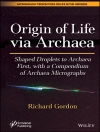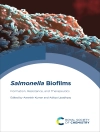Ammonia oxidising bacteria (AOB) and archaea are ubiquitous microorganisms, but their abundance and diversity vary widely across environments and play a crucial role in many ecosystems and aquatic ecosystems in particular. However, characterization of AOB communities require genomic methods as they are difficult to isolate from samples. Although non-toxic to humans, in the short term, ammonia in water systems are harmful to aquatic life both directly and indirectly through the disruption of the ecosystem by promoting the proliferation of algae (a process called eutrophication). Contamination often occurs due to use of disinfectants with chloramines, fertilizers, waste disposal and from natural processes. Due to their natural presence, utilising AOBs to treat water is viewed as an attractive solution, but greater knowledge of their biochemical processes and measurement of their efficacy is required.
Ideal for postgraduates and researchers in a variety of disciplines, this book covers the ecology, genomics, physiology and biochemistry of AOBs and their presence in wastewater, and the challenges, opportunities and potential applications for nitrification and ammonia removal.
Table des matières
Environmental Omics: A New Era to Study Ammonia-oxidizing Bacteria and Its Application in Bioremediation in the 21st Century;Nitrification in the Ocean: A Systematic Review;Anammox Bacteria and Its Application in Waste Water Treatment Plants;The Anaerobic Ammonium Oxidation Process: Inhibition, Challenges and Opportunities;Ammonia Oxidizing Bacteria in Wastewater Treatment; Heterotrophic Nitrification and Aerobic Denitrification (HN-AD) Process;Ecophysiology and Genomics Of N-Cycling Microbes in Environment;Cell Biology, Biochemistry and Metabolism of Unique Anammox Bacteria;Microbial Nitrogen Transformation and Recovery in Wastewater: Current Strategies and Applications;Nitrite-oxidizing Bacteria: Cultivation, Growth Physiology, and Chemotaxonomy;Quantitative Methodologies for Determining the Amount and Structure of AOB at the Transcriptional Level in Wastewater Treatment Plants












